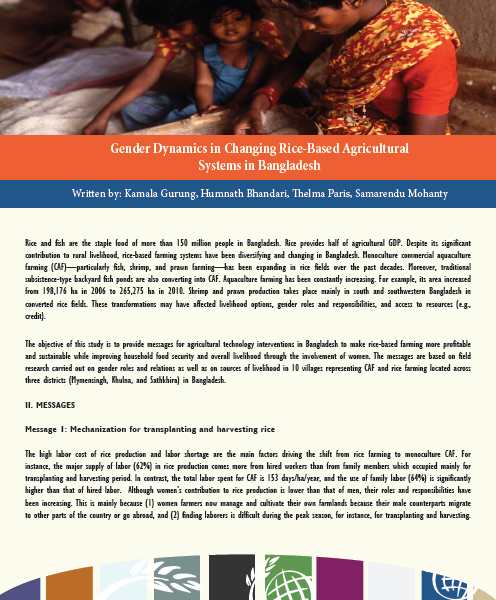
by Kamala Gurung, Humnath Bhandari, Thelma Paris, and Samarendu Mohanty
Rice and fish are the staple food of more than 150 million people in Bangladesh. Rice provides half of agricultural GDP. Despite its significant contribution to rural livelihood, rice-based farming systems have been diversifying and changing in Bangladesh. Monoculture commercial aquaculture farming (CAF) - particularly fish, shrimp, and prawn farming - has been expanding in rice fields over the past decades. Moreover, traditional subsistence-type backyard fish ponds are also converting into CAF. Aquaculture farming has been constantly increasing. For example, its area increased from 198,176 ha in 2006 to 265,275 ha in 2010. Shrimp and prawn production takes place mainly in south and southwestern Bangladesh in converted rice fields. These transformations may have affected livelihood options, gender roles and responsibilities, and access to resources (e.g., credit).
The objective of this study is to provide messages for agricultural technology interventions in Bangladesh to make rice-based farming more profitable and sustainable while improving household food security and overall livelihood through the involvement of women. The messages are based on field research carried out on gender roles and relations as well as on sources of livelihood in 10 villages representing CAF and rice farming located across three districts (Mymensingh, Khulna, and Sathkhira) in Bangladesh...Read more
